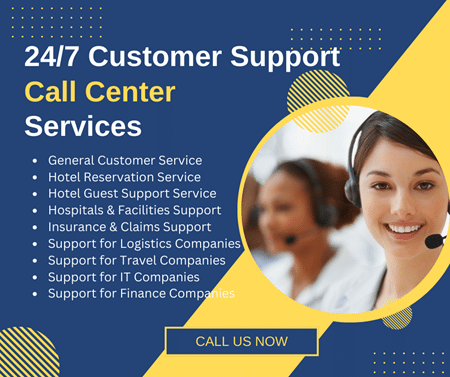A service desk is primarily accountable for delivering support to IT service users. They also provide prompt assistance to employees or customers seeking answers to technical queries. So, an efficient service desk develops the base for a delightful user experience.
Businesses, irrespective of size and type, have customers who expect top-notch service. The truth is that your business has to deal with numerous problems, demands, and complaints as long as you have a customer base.
In such a condition, a service desk can be your business partner and help you manage customer requests conveniently. Businesses worldwide also outsource IT service desks to streamline processes and organize workflows.
However, a service desk needs to be continuously improved to maximize its benefits for your business. This article has described 10 service desk best practices that you can explore to ensure the best user experience.
10 Service Desk Best Practices for Excellent User Experience
A service desk plays a vital role in driving your business toward success. However, your success depends on the efficiency of the service desk team. Here are the best practices to ensure you utilize the full potential of your service desk team:
- Use Suitable Service Desk Software
- Hire Skilled People
- Build a Learning Portal
- Execute practical SLAs
- Automate Your Operation Ticketing System
- Add Context to Your Tickets
- Improve Connection with Customers
- Promote Self-Service
- Measure Your Service Desk Metrics
- Constantly Enhance Your IT Support Services
1. Use Suitable Service Desk Software
One of the best service desk practices is implementing suitable software enormously developed for this kind of service. This software provides the essential tools that can make your team’s job effortless. Thus, they can resolve IT requests promptly and successfully. A service desk software will help automate the system and make it more effortless for the team to concentrate on fixing end-user issues.
However, there are numerous types of service desk software available in the market. So, you need to choose the best one suitable for your business. It means you should select one which is easy to use and provides an integrated and suitable set of tools. Thus, you can save the implementation time.
2. Hire Skilled People
The advantage of hiring skilled people is that they possess industry expertise and can fix any kind of issue. Most of the time, they resolve issues on the first attempt allowing your service desk to operate flawlessly. Moreover, fewer requirements for escalation will save time that your IT staff can utilize in productive tasks.
However, if hiring skilled people is costly, you can store the everyday experience of your staff in a central place. It will work as a knowledge station for your team and will help them act as an experienced agent. They won’t have to struggle to find solutions to customers’ queries.
3. Build a Learning Portal
A knowledge portal includes all the service-related information, troubleshooting steps, and solutions to standard questions. So, your team can use ready references while answering users’ queries.
Recording this crucial information somewhere accessible by all your agents can help them offer prompt and correct resolutions.
4. Execute Practical SLAs
SLAs represent documented contracts between users and service providers. It defines what services you will receive from your MSP partner. SLAs also incorporate the accountability of the outsourced IT service desk for providing support. Further, it documents the metrics to measure the performance of the service desk.
SLAs include attributes of the common decisions taken by you and the help desk outsourcing company. It describes to what extent the service provider will be responsible to support the end users. With this contract, both parties can make their expectations clear. It deters any probable misconceptions that could happen during the operation. SLAs generally involve a third-party service provider but can also support internal IT departments to define policies and anticipations.
5. Automate Your Operation Ticketing System
Automated ticketing means automatically creating and assigning tickets using ticketing software. It also allows you to send tickets to people having relevant experience and skills. This type of software, allows you to skip figuring manually the area of request and the person to assign the ticket. The automated process saves your productive time and additional costs.
Advanced automation also allows your service desk to automatically perform the entire ticketing process. It includes detecting an issue, generating a ticket, and fixing the problem. This kind of automated system is ideal for solving standard requests that involve the same kind of solution. With the automatic resolution of standard issues, your service desk team can save the extra time required to solve complex issues.
6. Add Context to Your Tickets
Sometimes your service desk receives requests that don’t include any clue about the issue. For instance, the users may say that their computer is not working, and there may be endless reasons behind this issue. These requests are very challenging to solve for the service desk agent as they do not have any knowledge about the situation.
Including context to the tickets help your service desk agents reach the source of the issue. It will help them figure out the actual problem in less time, and they can spend more time fixing the issue. Context helps support agents to fix issues fast and sustain the smooth function of devices. If you fix the issues promptly, it will lead to satisfied customers and help enhance your business productivity.
7. Improve Connection with Customers
Loyal bonding is vital for the success of service desks. Agents must carefully listen to users to understand the technical problems occurring in their system. Besides, the agents must share possible resolutions with customers while fixing their IT issues. The agents should convey the situation in a precise and easy manner. You can also execute live chatbots to improve communication with the end users.
8. Promote Self-Service
A Self-help portal is the best part of Managed IT Support services. It allows your customers to access the knowledge hub and collect information to settle simple issues themselves.
9. Measure Your Service Desk Metrics
Measuring your service desk metrics provides you with a precise idea about the performance of your service desk. So, you can work accordingly if any improvement is required.
10. Constantly Enhance Your IT Support Services
The most realistic service desk practice is to learn how to get the best service from it. Once you learn, you identify an outstanding service desk. The best way is to track your service desk metrics to improve things.
Conclusion:
Service desks provide valuable support to any successful IT service provider. With the change in market requirements and business processes, your service needs to improve. This article has cited 10 service desk best practices for excellent user experience. Following these best practices, you can improve efficiency and enhance end-user results.







